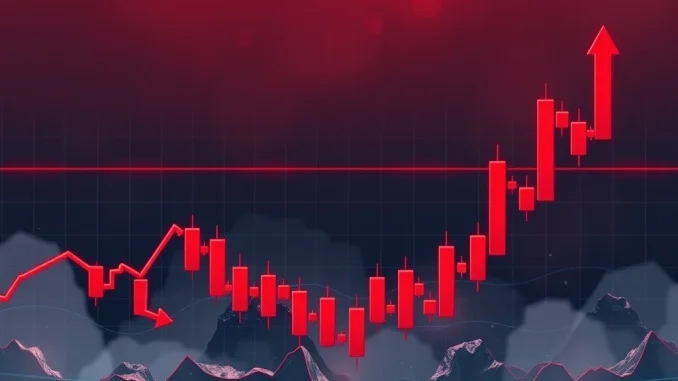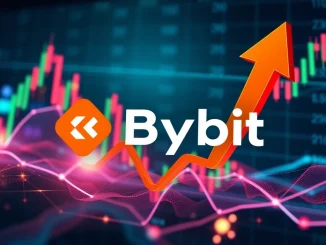
The crypto market just delivered a stark reminder of its inherent volatility. In a sudden move, a staggering $267 million worth of crypto futures positions were liquidated in the span of just one hour across major exchanges. This dramatic event contributed to a total of $593 million in futures liquidation over the past 24 hours. If you’re involved in or watching the cryptocurrency space, understanding what happened and why is crucial.
What is Crypto Futures Liquidation?
At its core, a crypto futures liquidation occurs when a trader’s leveraged position is forcibly closed by the exchange. This happens because the trader’s margin (the collateral they put down) is no longer sufficient to cover potential losses based on current market price movements. Think of it like a safety net disappearing.
- Futures contracts are agreements to buy or sell an asset at a future date for a specific price.
- Leverage allows traders to control a large position with a small amount of capital. For example, 10x leverage means you control $1000 worth of crypto with just $100 of your own money.
- Liquidation is triggered when the market moves against a leveraged position to the point where the trader’s margin falls below the exchange’s minimum requirement.
- The exchange automatically closes the position to prevent the trader’s balance from going negative.
Why Does Such Massive Futures Liquidation Happen?
Large-scale crypto liquidations like the one we just witnessed are typically the result of rapid and significant price swings in the market. When prices move sharply, especially downwards, many leveraged long positions (bets on prices going up) quickly become unprofitable and hit their liquidation price.
Here are a few contributing factors:
- Sudden Price Movements: A sharp, unexpected price drop (or rise, for short positions) is the most common trigger.
- High Leverage: Traders using high leverage are more susceptible. A small price change can wipe out their margin quickly.
- Insufficient Margin: Not having enough collateral in the account to withstand market fluctuations.
- Market Sentiment Shifts: News events or changes in overall market mood can lead to rapid selling or buying pressure.
In this instance, a swift price drop likely cascaded through leveraged positions, triggering widespread liquidations.
The Impact of Large Crypto Liquidations
While painful for the traders involved, large liquidation events also have broader market implications. The forced selling from liquidated long positions can add further downward pressure on prices, potentially triggering *more* liquidations in a domino effect. This contributes to increased crypto market volatility.
Consider the numbers from the past day:
| Timeframe | Approximate Liquidation Value |
|---|---|
| Past Hour | $267 million |
| Past 24 Hours | $593 million |
These figures highlight the scale of risk present in the leveraged futures market. Such events can create short-term market instability but also sometimes present opportunities for traders who weren’t over-leveraged.
Navigating Leveraged Trading Crypto Risks
The recent wave of futures liquidation serves as a critical lesson for anyone considering leveraged trading crypto. While leverage can amplify profits, it equally amplifies losses.
Key takeaways for managing risk:
- Understand Leverage: Know exactly how much risk you’re taking on with different leverage levels.
- Use Stop-Loss Orders: These automatically close your position at a predetermined price, limiting potential losses before liquidation occurs.
- Manage Your Margin: Ensure you have sufficient funds in your account to withstand expected market swings. Don’t use maximum leverage.
- Start Small: If new to leveraged trading, begin with small position sizes and low leverage.
- Stay Informed: Be aware of market news and potential catalysts for volatility.
What This Means for Crypto Market Volatility
This event underscores that significant crypto market volatility is a constant factor. The presence of large leveraged positions means that price movements can be exacerbated by liquidation cascades. Traders and investors need to be prepared for rapid swings and factor this into their strategies.
While volatility presents opportunities, it also demands caution and robust risk management practices. Events like these are not uncommon in fast-moving, highly leveraged markets.
Conclusion: A Sharp Reminder of Leverage Risks
The sudden $267 million crypto futures liquidation within an hour, contributing to nearly $600 million in 24 hours, is a powerful illustration of the risks inherent in leveraged cryptocurrency trading. It highlights how quickly significant value can be wiped out when market conditions turn unfavorable for highly leveraged positions. For anyone participating in the crypto futures market, understanding the mechanics of liquidation, managing leverage responsibly, and implementing strict risk controls like stop-losses are not just advisable – they are essential for survival.



